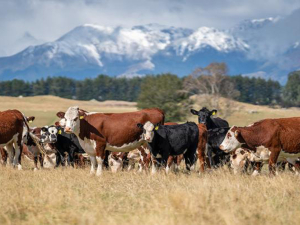At Fieldays this week, DairyNZ will celebrate the 20th anniversary of its online platform DairyBase.
DairyBase is designed to help farmers drive profit and identify positive changes for their farm business and farmers are being encouraged to visit the DairyNZ Fieldays stand to learn how the online platform can help them better understand and enhance their farm system and business performance into the future.
“DairyBase helps farmers compare key performance indicators and determine what is working well and opportunities for improvement,” says DairyNZ head of economics Mark Storey.
“It is New Zealand’s largest and longest running dairy benchmarking service,” Storey says. “It’s a great example of DairyNZ bringing its farm systems and credible evidence-based approach together to benefit farmers.”
Storey says DairyBase is one of hundreds of tools and resources DairyNZ and predecessors Dairy InSight and Dexcel have developed on behalf of farmers over the past 20 years, adding that more are being developed.
The DairyBase online platform allows farmers who register to track their progress towards long and short-term goals, draw comparisons against other farms and keep a tight rein on farm working expenses.
Two types of benchmarking are available – the business's financial performance and the farm’s physical aspects, comparing them to industry standards or targets. Farmers receive reports based on data they provide, with both national and regional benchmarking available.
The DairyBase team will be on-hand at Fieldays to show farmers how the online platform works, including its strength in analysing farm trends over time and can show farmers where their farm may sit on regional benchmarking graphs.
Storey says that more than 20% of New Zealand dairy farmers contribute their farm and business data to DairyBase each year.
“Farmers and rural professional advisors, including accountants, can be sure the benchmark information is extremely robust, enabling confident and effective decision making,” he says.
“DairyBase is being continually improved with DairyNZ’s farm systems, economics and digital technology teams working together to deliver the best service to farmers.”
To celebrate the 20th anniversary, there is no cost to farmers to use DairyBase from 1 June 2024.
Tokoroa dairy farmer George Moss has been using DairyBase for all of its 20 years - providing his farm’s physical and financial data and using the reports to continually improve his farming operation.
"DairyBase data has been pivotal to our decision making and has driven strategy and subsequent direction of travel for our business,” Moss says.
Moss is also part of DairyNZ’s Baseline Project, an extension of DairyBase which collects more detailed environmental data from the 450 farmers involved so far. Qualified data collectors visit the Baseline farmers to help the farmers collate and input the data across physical, financial and environmental performance.



















